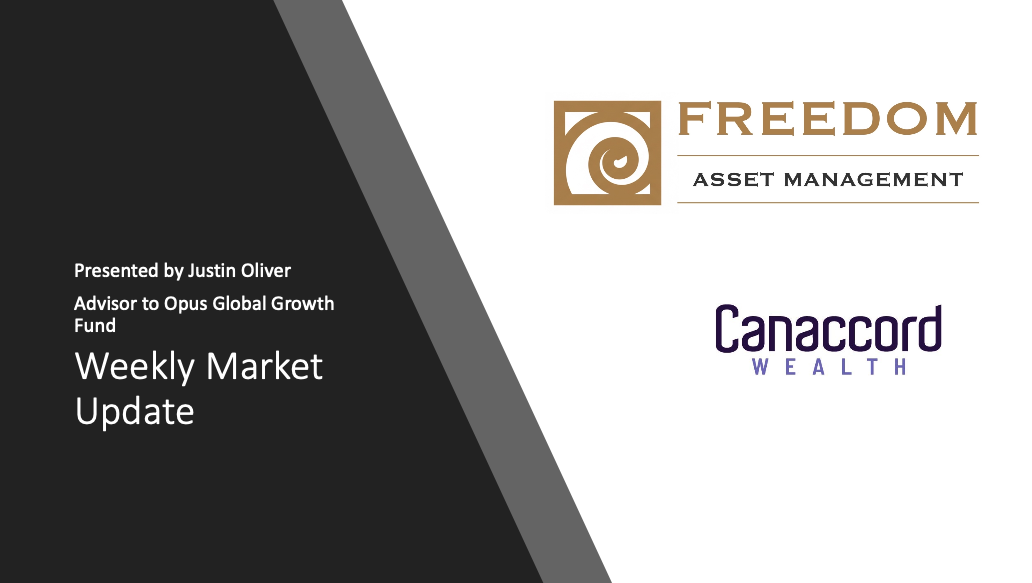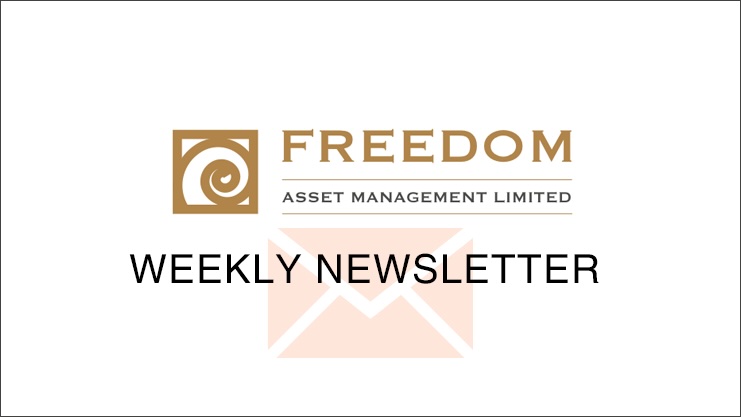Weekly Newsletter
Freedom Calls, 29/9/25: “It’s windy in Hong Kong... and China changes tune on growth and maybe more”
by
Freedom Asset Team
September 29, 2025
7 Minutes

Freedom Calls, 29/9/25: “It’s windy in Hong Kong... and China changes tune on growth and maybe more”
From the team at Freedom Asset Management
A bit windy in Hong Kong
The USVIP "Cody Willard World Tour" came to an end... and the week in Hong Kong did not quite go to plan… it seems that organising a big family office client event during the typhoon season is in fact a tricky idea. "The worst super typhoon to hit Hong Kong since WWII….” turned out to be quite windy, but somewhat less exciting than we all feared; in fairness, it did necessitate Cathay to relocate all their planes away from HKG airport for 36 hours, so the expectations were pretty bad.

Pictured: (L-R) Charles Harris, Cody Willard, Bryce Smith and Anson Chau in Hong Kong’s JW Mariott lobby after the last meeting of the trip, Sept 2025
At the end of the 3-week world tour, the US Technology VIP fund, which launched only 6 months ago with $5m, now stands at just a whisker under $20m. This rates as our most successful private client fund launch ever - a great testament to the investment proposition and the team running it. I want to thank all our clients and friends of the firm for making Cody and Bryce feel so welcome and to our favourite Abu Dhabi Sovereign Wealth Fund for backing the firm on this strategy. The fund is already performing well, but we think this is just the beginning of a long and profitable journey. They also enjoyed the trip, so we hope to have Cody and Bryce back again in Europe and the Middle East before Christmas.
China changes tune on growth… and maybe more
We had some great conversations with friends of the firm whilst in Hong Kong. The Hong Kong stock market (HKSI) has had a strong year so far, up over 35% YTD. After 5 years in the doldrums, Hong Kong listed tech stocks have burst back to life - as well as the dividend stocks we discussed last week. And there are several reasons for it. Despite the tricky domestic economy, high youth/graduate unemployment and difficult real estate sector, China got its mojo back when DeepSeek arrived in February this year.
This came as a massive surprise to the US tech community, but just as importantly to the Chinese leadership. Now whilst DeepSeek's claim that it was "built for $5m on some old Nvidia chips” are about as honest as a Trump loan application to Deutsche Bank, the point remains that DeepSeek is the real deal and it was Made in China.
President Xi has been touting a “common prosperity” mantra for some time. Now common prosperity could have dragged people up, but of course the easiest way to achieve common prosperity is to drag people down - the lowest common denominator problem. So high achieving CEOs were being told to take a pay cut, travel in economy, lose the suit and tie and dress like their co-workers. It hasn’t worked. As the late great Charlie Munger is reputed to have said, “show me the incentive and I will show you the outcome”. So no incentive = unspectacular outcome. And in fairness to the Chinese Communist Party (CCP), they now realise this, even if Xi has been a little reluctant to the table. I have many friends and former colleagues who grew up in Eastern Europe in the 70s/80s who could have told them this a few years earlier, but better late than never I guess.
So at the forthcoming 20th Plenary Session of the CCP in Beijing in October, some (radical) changes are proposed. I am reading this from the official website of the CCP - so no leaked memos here, just the press release from their July meeting announcing the direction of the October meeting. And it chimes with what we were hearing in Hong Kong last week.

Pictured: the stop/go board is back on “go” for the Chinese economy, at least on the Kennedy Road in HK, Sept 2025
Here are some of the lines that stood out to me, and yes, I do understand the irony of quoting the CCP in my Monday newsletter, but go with me on this one(!):
- "The [July] meeting stressed the need to effectively unleash potential in domestic demand, and encourage goods consumption while fostering new growth drivers of services consumption."
- "It is necessary to spur consumption demand while securing and improving people's livelihood, stimulate the vitality of private investment, and expand effective investment, according to the [July] meeting."
- “...entrepreneurs are encouraged to gain market competitiveness through high-quality products and services”
- "The [July] meeting also stressed the need to continuously prevent and defuse risks in key areas…. risks related to local government debt should be defused in an active and prudent manner. The attractiveness and inclusiveness of domestic capital markets should be further enhanced."
The full text is here:
http://en.cppcc.gov.cn/2025-07/31/c_1113554.htm
The key point here is not that the CCP is suddenly going to hand out $600 stimulus cheques for everyone to go and buy 65” flatscreen TVs, because they are not; but rather they intend to create the conditions for growth. By that we mean at the current time there is concern (1) around the quality of local government debt, and (2) whether risk capital will be rewarded. So if you are a bank or insurance company sitting on lots of tricky local government debt, you may be provisioning it and therefore less keen to lend, or invest in risk assets. If you are an entrepreneur, you saw what happened to Jack Ma (former Alibaba leader) a few years ago, and you might have started looking for a one-way ticket to San Francisco. These two impediments to domestic growth have now been addressed very clearly.
It does not mean that China’s problems are all over, but it does mean that the CCP has woken up to the fact that entrepreneurs are good, and a winning stock market is good - even if it is to achieve socialist objectives. China cannot rely on cheap exports to the US and Russia to keep growing, it needs homegrown technology success. Remember earlier this year when we noticed that Jack Ma was pictured shaking hands with Xi, following his years-long "re-education”…. this was the signal that China was embracing tech again. So China could be walking out of its economic woes, and on its march back to growth. That is a great thing for China. Anything that is good for China is good for Hong Kong SAR, and also the global economy.
I accept it will take a long time for the skeptics to believe, and of course we may all be disappointed by the reality, but the smart money is already looking (as HK’s stock market gains show) and that should give us all hope.
Performance - a relatively quiet week
It was a fairly quiet week in terms of fund performance. The only small surprise was the move in cable (GBP/USD), which pushed up GBP returns across the piece.

Capital at risk. Returns in US dollars unless otherwise stated. Source: * Estimates Freedom Asset Management as at 28/9/25. Please note depending upon how the funds are invested a small number of underlying funds can price 1-2 days after we take our estimates above so final published NAVs may vary. Estimated GBP returns are from a $1.25 FX rate on 31/12/24. Please note launch dates of USVIP 12/2/25 and MINC 20/5/25. ** Note fund prices quarterly and includes 5% discount to NAV expressed as 5% performance above for 2024, *** Morningstar as at 28/9/25, I shares for CIM Dividend Fund, F shares for PHC Global Value Fund.
Our articles this week:
- Cody Willard, Adviser to US Technology VIP Fund, in “Why Tesla could make 20x from here” takes the other side of Justin Oliver’s article last week, and reminds us how far Tesla has come, and projects how far we think it could go
- Alan Walker, introduces Palm Harbour Capital’s Global Value Fund - the latest public market strategy being taken out by our European Institutional Distribution team, in “The Power of Compounding slowly"
- Charles Harris and Derek Akkiprik in our Abu Dhabi Investment Team talk about music rights in “Bowie bonds rock!"
Please scroll down for the articles.
This week I shall be in Abu Dhabi and Dubai - next week, I am based in Hong Kong again.
We have Ramon Eyck in Abu Dhabi and Dubai this week. He is member of our OGF and Managed Income Investment Committees and looks forward to meeting our clients in the region. He will be in Saudi with Shawn on Friday.
Wherever you are this week, let me wish you a prosperous, peaceful and less windy week ahead.
All the best,
Adrian
Co-Founder // Freedom Asset Management
Guernsey // Abu Dhabi // Hong Kong
M: +44 7781 40 1111* // M: +971 585 050 111 // M: +852 5205 5855* (*also WhatsApp)
--------------------------------
“Why Tesla could make 20x from here”, 29/9/25
By 10,000 Days’ Cody Willard, Adviser to the US Technology VIP Fund
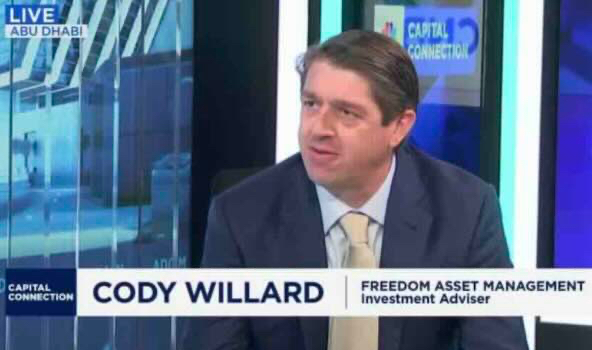
In February 2024, we published "The Ultimate Tesla Book, With The Ultimate Tesla Model!" when Tesla stock traded around $190 per share. At the time, Tesla’s market cap was about $600 billion. In the book, we laid out a bold forecast: Tesla could reach a $28 trillion market cap by 2040.
Our model was built on Tesla scaling its AI and robotics businesses to massive levels, driving not just higher revenues but far higher margins than the relatively thin vehicle margins Tesla earns today. Most people — including many professional fund managers we talked to — dismissed those numbers as absurd.
Fast forward to today, and Tesla shareholders will soon vote on a roughly $1 trillion pay package for Elon Musk. In order to earn his pay, Elon has to hit audacious financial and operational milestones, including:
· 20 million Teslas delivered
· 1 million active commercial robotaxis
· 1 million Optimus robots delivered
· 10 million paid FSD subscriptions
· $400 billion in EBITDA
· Establishing a CEO succession plan
Sound familiar? These targets look eerily similar to the assumptions we used in our valuation model. Maybe someone on Tesla’s board read our book (haha) — but joking aside, the reality is this: Tesla’s board has essentially confirmed our vision for Tesla’s future.
When we published our book, skeptics asked whether Tesla/Elon was really serious about robots, robotaxis, and scaling AI into new industries. The media speculated endlessly about whether Elon Musk was distracted by politics or his other ventures. Traditional “value” investors pointed out that Tesla's market cap was greater than nearly every other automaker combined, despite lower profits and slowing growth.
But what the Street and most investors miss is that we aren't looking at Tesla's valuation based on current metrics. One of the keys to our approach is that we model out what we think a company's earnings will look like in 5, 10, and even 15 years. We then compare what the profits will be in those future years to the current valuation.
Our Ultimate Tesla model confirmed that when looking out into the not-so-distant future, Tesla's valuation was in fact extremely attractive. And obviously if we look out even further, we can see that shareholders have the opportunity to generate serious returns by betting on Tesla/Elon for the long term. Even at today's $1.4 trillion valuation (up 133% from the time we published our book by the way), Tesla could still roughly 20x from here over the next fifteen years.
While the road ahead won't be easy, the recipe for success is already present at Tesla. In The Ultimate Tesla Book, we identified five “core strengths” that set Tesla apart:
1. First-principles engineering approach
2. Sleep-at-the-factory mentality
3. Thinking big
4. Manufacturing ability
5. Vertical integration
Combine those strengths with Tesla’s unmatched capital base, talent pool, and manufacturing footprint, and you have the only company on Earth positioned to scale AI into physical form — robotaxis, humanoid robots, and beyond.
With this pay package, Elon is once again betting on himself, and we want to be there with him as he transforms Tesla into the world's leading physical AI company. If Tesla accomplishes what's laid out in the pay package, it will truly change the world forever as its robots and self-driving technologies Revolutionize the way we live, travel, and work.
Tesla’s board just validated our $28 trillion vision. Elon is betting on himself. We’re betting on Elon — and Tesla shareholders stand to reap the rewards. The future of Tesla has never looked brighter!
Cody Willard
P.S. If any of our investors would like a copy of the book, we're happy to send you a signed copy.
——————————
“The power of compounding slowly”, 29/9/25
By Alan Walker, European Sales Director

London-based Peter Smith is not interested in lottery tickets – his aim is for his investors to get rich slowly.
As the founder and manager of the Palm Harbour Global Value fund, he finds that cashflow, compound interest ("the 8th wonder of the world" as Albert Einstein called it) and a keen eye for detail are what drives success.
The strategy, founded in 2019 and recently added to Freedom’s institutional distribution portfolio, has grown from EUR2m of seed capital to EUR25m under management and has delivered annualised returns of 18.3% over the past 5 years. This while having little to no exposure to US equities and focusing on small and mid cap European stocks – a market segment which has been little in favour in recent years.
As one of our institutional investors said on meeting Peter, "performance has been great when it should have been poor; your stock selection is exceptionally strong".
In a world often preoccupied with the headlines of the day and "the next big thing", to have patience as an investor is very much a virtue - and in a week when the EuroMillions lottery jackpot was once again above EUR100m for the draw last Friday, the discipline to resist long shot moonshot bets is one of the elements which marks out Peter’s investment approach.
He began his career in New York working for a large European bank before deciding that time at business school and a switch to asset management would be a more interesting path to follow.
Inspiration came from his London Business School tutor Eddie Ramsden, who studied value investing under Joel Greenblatt at Columbia University, and from Francisco Garcia Parames, a renowned Spanish value investor who is a key backer of the Palm Harbour Global Value Fund alongside Peter.
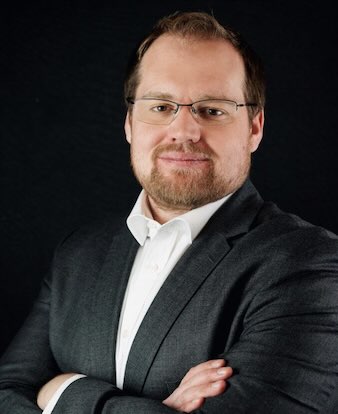
Pictured: Peter Smith, Founder of Palm Harbour Capital
Building on an introduction to Parames in London, Peter stayed in touch and exchanged stock ideas. Parames invited Peter to join him as an analyst but Peter countered with an offer to manage money for Parames – and after two years running a successful paper portfolio for him, Peter secured seed capital and launched the fund.
Contradictions and problems always draw Peter’s eye – a high margin textile company operating in a crowded marketplace but with a waiting list of premium clothing clients for example, or a stock which has fallen significantly in a few days of trading, but without any evident changes to the underlying business and its prospects.
Detailed research into such companies can reveal catalysts for revaluation which short term investors might discount or ignore – inside the business itself, such as a management or structure change, or in the sector or wider market through government policy changes or stock listing requirements.
Times of market volatility can also prove very fruitful. Peter names the global shutdown caused by the Covid 19 pandemic as ‘the biggest buying opportunity in years’, and also took the chance to pick up some of the stocks which fell sharply in value after the US tariff announcements on ‘Liberation Day’ in April this year.
The fund has between 40 and 45 holdings in which the top 20 represent 60-70% of the fund. While the stocks held may be diverse in terms of sector and country, they are united in being strong cashflow-positive businesses which are undervalued by at least 50% and will reward a patient investor who takes the long view and can wait for change.
This mix produces a portfolio which is strongly diversified and delivers a unique return profile while displaying lower volatility than the market - the beta is 0.4 (where 1 is the same volatility as the market, and a lower number suggests lower volatility).
Holdings fall into three groups:
· quality compounders – strong companies available at an unusually low price due to market volatility such as during Covid or after the US tariff announcement
· special situations – merger/demerger, management change, founder handing over to successors – these can be many and varied
· deep value – misunderstanding, or misinterpretation of a company leading to a very cheap share price
Each holding must continuously prove its worth in the portfolio. Peter’s view is that value investors have a tendency to sell too early, so he prefers to monitor rising holdings and adjust their weight. The hit rate for the fund is just under 80% so there are plenty of winners to review.
A stock is sold when it approaches its fair value, or when there is a stronger new idea to bring into the fund, so turnover of holdings is relatively low.
Initial reactions to the fund among our institutional investors have been very positive, with one already working to prepare an investment in the strategy after a first meeting with Peter earlier in the year. We look forward to introducing the strategy more widely through the peak distribution travel season of October to May.
Alan Walker
—————————————————
"Bowie Bonds Rock!”, 29/9/25
By Charles Harris and Derek Akkiprik - Investment Team in Abu Dhabi
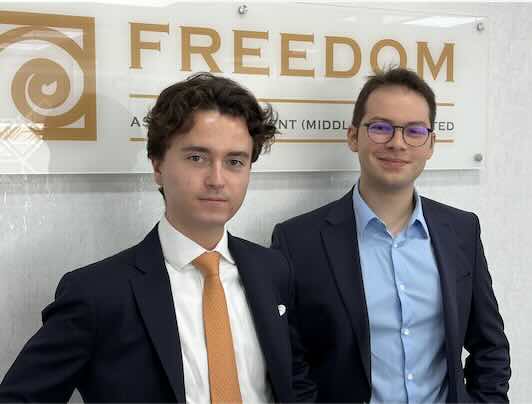
“Bowie Bonds” Are Back (and Bigger): What Today’s Music-Royalty ABS Mean for Portfolios
Wall Street has already issued about $4.4 billion of music-royalty securitizations in 2025, a record pace that turns once-niche “Bowie bonds” into a mainstream hunt-for-yield destination. Big money—Blackstone, Carlyle, and the Michigan state pension—has been anchoring deals, and rating agencies now routinely assign A-level grades to senior tranches (Financial Times 2025).
The Australian Financial Review put the year-to-date total at US$4.4 billion as of September 8, underscoring how quickly this corner of structured credit has scaled (Australian Financial Review 2025).
What Bowie Bonds Are (and How We Got Here)
“Bowie bonds” are asset-backed securities collateralized by future music royalties. David Bowie pioneered the idea in 1997, with the help of David Pullman, securitizing royalties from 25x pre-1990 albums to raise $55 million at a 7.9% coupon; Prudential bought the entire issue. The notes were self-liquidating over roughly ten years (Investopedia 2022; WIPO Magazine 2016).
As piracy hit physical sales in the early 2000s, Moody’s downgraded the bonds to Baa3 in 2004, one notch above junk—an early lesson in technology risk—but the bonds matured and redeemed in 2007 as planned, with rights reverting to Bowie (ABC News 2004; Investopedia 2022).
Today’s transactions are “Bowie bonds in all but name,” but with smarter plumbing. Issuers ring-fence large, diversified catalogues—often tens of thousands of copyrights—inside master-trust structures and sell senior notes serviced by multi-channel royalty streams paid and ad-supported streaming, sync licensing (film/TV/games), performance, social/UGC and fitness apps.
Deals come with credit enhancement (overcollateralization and subordination), liquidity/interest reserves, and performance triggers (DSCR/IC tests) that turbo-amortize or trap cash if metrics slip (Skadden 2025; American Banker/ASR 2025).
What’s New in 2025 (and Why It Matters)
Three developments stand out:
- Bigger, longer, cleaner. Concord closed a $1.765 billion multi-tranche deal in July with senior notes rated A2 (Moody’s)/A+ (KBRA) across 5-, 7-, and a first-of-its-kind 10-year tranche — privately placed with Apollo — signalling both depth of demand and growing comfort with duration in this asset (Concord 2025; American Banker/ASR 2025).
- Repeat issuers tightening spreads. Blackstone’s Recognition Music Group (the rebranded successor to Hipgnosis’s platform) is marketing ~$372 million of five-year paper; trade press expects tighter pricing versus earlier vintages, a hallmark of asset-class maturation (Music Business Worldwide 2025; GlobalCapital 2025).
- Institutionalization. The $4.4 billion YTD tally and a broader esoteric-ABS boom reflect a structural bid for income from insurers, pensions, and yield-hungry allocators (Financial Times 2024; Financial Times 2025).
Why They’re Interesting for Investors
Low correlation, real cash yield. Multiple industry and policy sources characterize music-royalty cash flows as low-correlated to equities and the business cycle, behaving more like infrastructure-style annuities than pro-cyclical earnings (WIPO Blog 2025; ABF Journal 2023). That diversification, combined with structural protections and granular streaming data, is why senior music ABS can slot into income sleeves seeking incremental spread over conventional IG credit (Skadden 2025).
Data-rich underwriting. Streaming transformed monetization and measurement: country/territory mix, cohort behaviour, and playlist dynamics can be tracked in near-real-time, improving servicer intervention (e.g., sync campaigns, playlisting) and investor visibility. That’s a sharp upgrade from the CD era that tripped Bowie’s 2004 downgrade (Skadden 2025; ABC News 2004).
Secular tailwinds. IFPI data show global recorded-music revenue around $29.6 billion in 2024, the tenth straight growth year, with streaming now the dominant line and growth broadening in MENA, Sub-Saharan Africa, and LatAm—useful geographic diversification for royalty pools (WIPO Magazine/IFPI 2025).
All of these trends make Bowie bonds and music linked ABS an interesting asset class to watch for the future. As we seek uncorrelated returns in our fixed income and multi-asset portfolios, an allocation to Bowie bonds could make sense as part of a highly diversified portfolio. We will keep you posted on this.
Charles Harris and Derek Akkiprik
---------------------------------
If you would like to be removed from this Monday morning mail, please reply ‘unsubscribe’.
Capital at risk. For further details about any of Freedom’s investment strategies or a copy of any fund prospectus, please contact investor@freedomasset.com. Please note: The value and the income produced by strategies may fluctuate, so that an investor may get back less than initially invested. Value and income may be adversely affected by exchange rates, interest rates, or other factors. Levels and bases of taxation may change. Investors should consult their own tax advisor regarding their individual tax treatment with respect to the strategies referred to herein. This document does not represent a research report. The opinions expressed are those of the authors only, and may not be representative of, or shared by, Freedom Asset Management Limited or its affiliates. This email should not be considered to be an offering memorandum and is not an offer to sell nor a solicitation of an offer to purchase interests in any fund. Offers and sales will be made only pursuant for the current prospectus, constituent documentation and in accordance with applicable securities laws. A decision to invest in any of the funds should only be based upon review of such documents and these materials are qualified in their entirety by reference thereto.
Please note Freedom’s investment strategies are only available to Professional Investors, as determined by the relevant jurisdiction.
This message is intended solely for the addressee and may contain confidential or privileged information. If you have received this message in error, please permanently delete it and do not use, copy or disclose it. Freedom Asset Management Limited is licensed to carry on controlled investment business under the Guernsey Financial Services Commission (GFSC); Reference Number 2262946. The registered office of Freedom Asset Management Limited is: 2nd Floor, New Century House, 2 Jubilee Terrace, St Peter Port, Guernsey, GY1 1AH, Channel Islands. Freedom Asset Management (Middle East) Limited is authorised and regulated by Abu Dhabi Global Market (ADGM) Financial Services Regulatory Authority, No: 250016. The registered office address of Freedom Asset Management (Middle East) Limited is Office 2406, Tamouh Tower, Al Reem Island, Abu Dhabi Global Markets, Abu Dhabi, United Arab Emirates. Freedom Asset Management (Asia) Limited, holds a Type 9 Asset Management license from the Securities and Futures Commission in Hong Kong, Ref: BUR351. The registered office of Freedom Asset Management (Asia) Limited is Rm 97 5/Fl United Centre, 95 Queensway, Admiralty, Hong Kong.
© 2025 Freedom Asset Management Limited.

